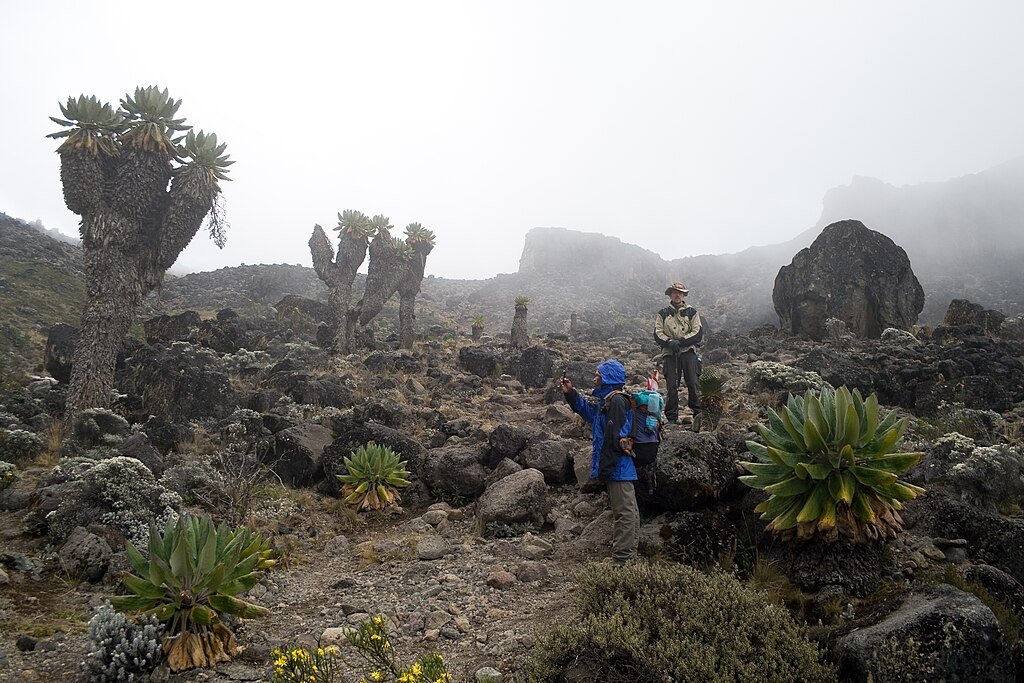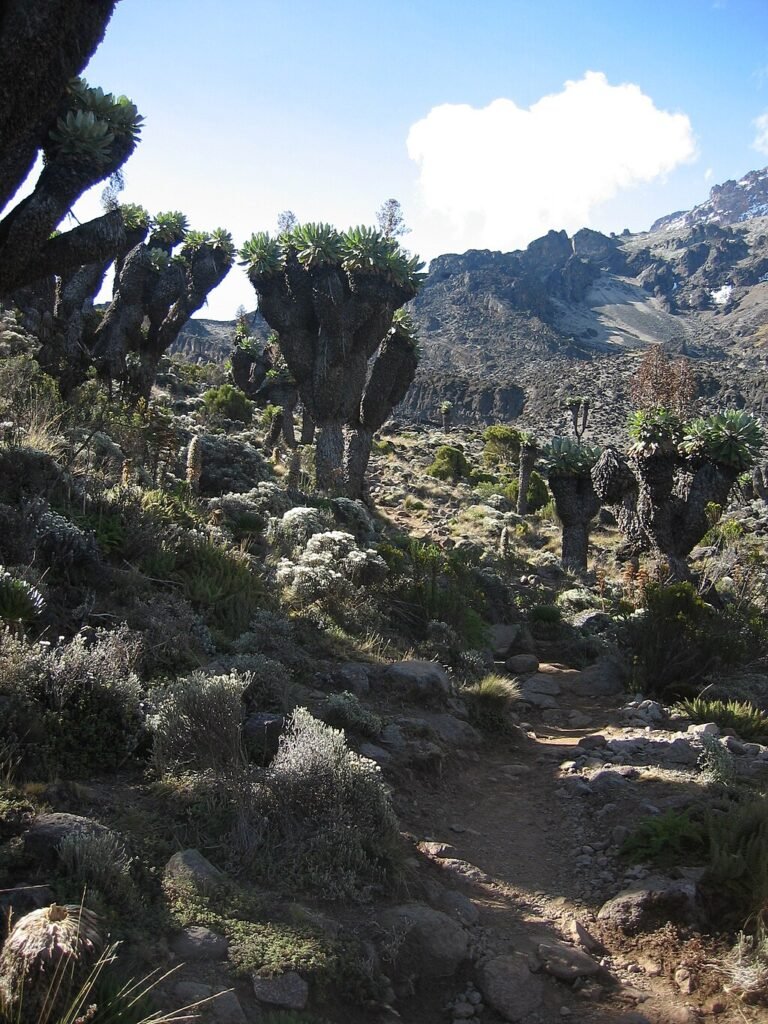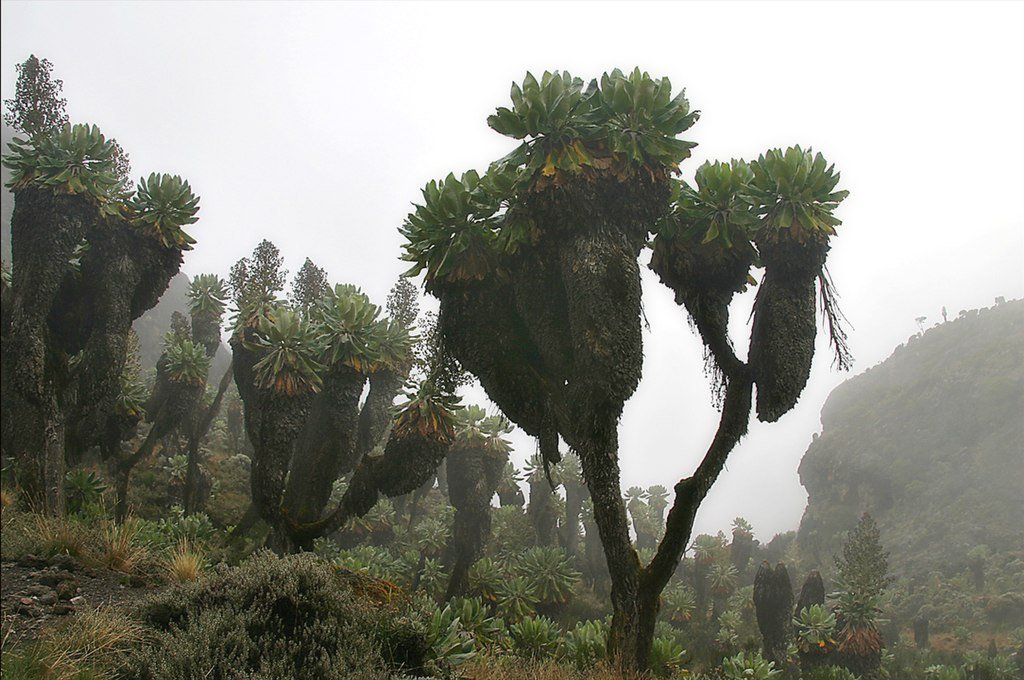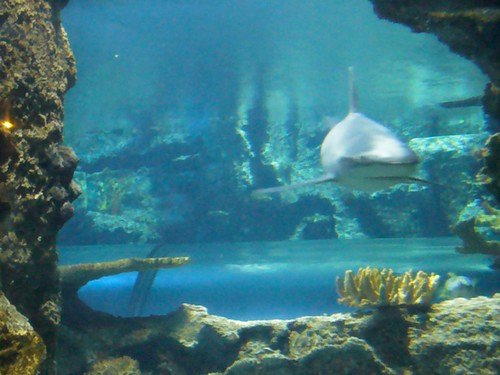The highest mountain in Africa, Mount Kilimanjaro, is a land of extremes where equatorial heat gives way to Arctic ice in barely a few thousand meters. But tucked among its dramatic slopes is one of the most unusual botanical beauties in nature: the giant groundsel (Dendrosenecio kilimanjari). Rising nowhere else on Earth, these towering plants which resemble a cross between a pineapple and a cactus have evolved over a million years to survive Kilimanjaro’s hostile environment. These prehistoric-looking plants, with their self-insulating dead leaves, natural antifreeze, and slower than continental drift growth rate, are a living tribute to the inventiveness of evolution.
A Botanical Oddity: The Giant Groundsels Unearthly Appearance

The enormous groundsel first seems to be something from a science fiction movie. Its thick, succulent stem is crowned by a rosette of robust leaves; layers of withered foliage hang to its trunk like a tattered overcoat, an adaptation that shields it against freezing evenings. Towering over hikers like silent sentinels of the moorland zone, some specimens reach thirty feet (9 meters).
The surprise, though, is that These plants are distant cousins of the modest common groundsel, a weed resembling dandelion found all around. Kilimanjaro’s groundlings changed into giants over millennia of isolation, demonstrating that even the most modest plants can evolve into something remarkable.
Surviving the Impossible: How Giant Groundsels Defy Kilimanjaro’s Extremes

The temperature of Kilimanjaro swings from tropical humidity at its base to subzero blizzards at the summit. Giant groundsels, however, flourish where most plants would die between 9,200 and 13,101 feet (2,800–4,000 meters). Their revelations?
- Natural Antifreeze: Special fluids in their stems stop ice crystals from forming, allowing them to survive temperatures as low as -20°F (-29°C).
- Their spongy stems and leaves stockpile moisture, which is vital during Kilimanjaro’s dry seasons.
- Their vertical development maximizes sunlight absorption, a need in the thin, high-altitude air.
Amazingly, these plants only grow 1–2 inches (2.5–5 cm) annually, thus the highest specimens could be centuries old silent witnesses to Kilimanjaro’s changing glaciers and human visits.
A Million Years in the Making: The Evolutionary Journey of Kilimanjaro’s Giants

From lowland Senecio plants that progressively ascended Kilimanjaro, genetic studies point to giant groundsels colonized there within the last million years. Until they grew to be the towering anomalies we know today, wind-carried seeds let them spread slowly, just a few meters at a time.
Their closest relatives? A handful of other giant groundsels are found only on East Africa’s highest peaks, like Mount Kenya and the Rwenzoris. Each is a unique species, shaped by its isolated home, a phenomenon scientists call “island evolution on mountains”.
Where to Find Them: The Best Routes to Spot Kilimanjaro’s Living Fossils
Two main areas are where giant groundsels cluster: the Shira Plateau and Barranco Camp, where lemmosho, Machame, and Marangu route hikers can wonder at them. The Northern Circuit also reports sightings; but, the drier northern slopes lack the rainfall these species require.
Pro tip: The Lemosho Route offers the most dramatic encounters; groundsels line the path between Shira 2 Camp and Barranco Camp, a fantastical scene right out of a fantasy book.
Guardians of the Mountain: Why Giant Groundsels Matter

Beyond their extraterrestrial appeal these plants are extremely vital to the ecosystem:
- The deep roots of soil stabilizers aid in fighting erosion that has occurred on the fragile slopes of Kilimanjaro.
- Small mammals and birds build their nests within their leafy crowns found in wildlife sanctuaries.
- The growth of lichens on their trunks indicate pure, pollutant-free air.
However, they face the risk of destruction, climate change as well as negligent hikers who trample on their roots, which are slow to grow. In order to preserve these precious living things, they depend on conservation initiatives.
The Future of Kilimanjaro’s Giants: A Race Against Time
Scientists are concerned regarding the condition of groundsels of Kilimanjaro’s glaciers as they disappear and temperatures rise. Their small altitude range means they are more prone to changing conditions. Reforestation efforts led by towns in the vicinity are attempting to protect their natural habitats by including native trees in order to maintain the ecosystem.
At present, these ancient plants are an ode to the beauty of the planet and the resilience of nature. They are, according to one researcher “monuments to time itself,” not just plants.
Sources:

Jan loves Wildlife and Animals and is one of the founders of Animals Around The Globe. He holds an MSc in Finance & Economics and is a passionate PADI Open Water Diver. His favorite animals are Mountain Gorillas, Tigers, and Great White Sharks. He lived in South Africa, Germany, the USA, Ireland, Italy, China, and Australia. Before AATG, Jan worked for Google, Axel Springer, BMW and others.



